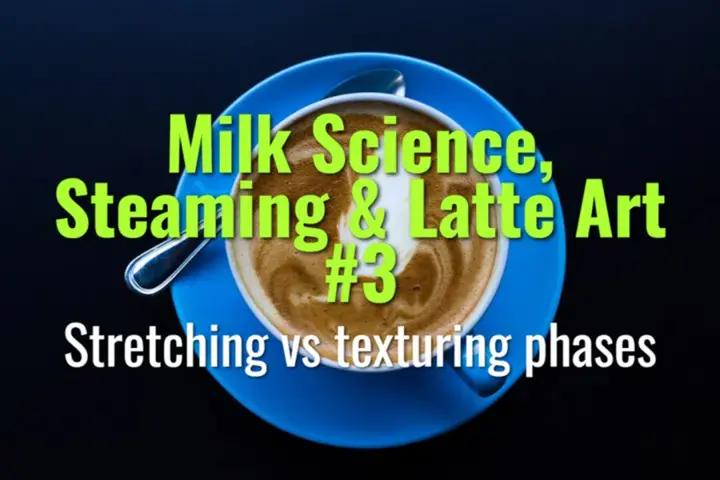Stretching vs texturing phases
The two key stages of milk steaming—stretching and texturing—and how to balance them for ideal microfoam and latte art performance.
- Coffee Basics Nerds
- 2 min read
Article 3 of 12 in Milk Science, Steaming & Latte Art/

Stretching Phase
- Definition: The initial stage where air is introduced into milk.
- Technique:
- Wand tip just below the milk surface, near edge of pitcher.
- Audible paper-tearing or hissing sound indicates correct air incorporation.
- Goal: Add small, controlled amounts of air to expand milk volume.
- Timing: Only during the first few seconds (when milk is cool, <40 °C).
Texturing Phase
- Definition: The stage where incorporated air is emulsified into microfoam.
- Technique:
- Submerge steam wand slightly deeper.
- Create a whirlpool or vortex motion for uniform bubble integration.
- Goal: Break down larger bubbles, distribute microfoam evenly, and polish texture.
- Timing: Majority of steaming process until milk reaches 55–65 °C.
Key Differences
- Stretching = introducing air (foam creation).
- Texturing = integrating and refining air (foam polishing).
Practical Tips
- Avoid over-stretching → too much air = thick, dry foam.
- Don’t skip texturing → uneven, bubbly milk.
- Practice consistent wand angle and depth to smoothly transition between phases.
Flavor and Texture Outcomes
- Balanced stretching + texturing → glossy, velvety microfoam ideal for latte art.
- Poor technique → foam separates, latte art becomes unstable, flavor balance suffers.
Summary
Steaming milk requires a balance: stretching to introduce air, and texturing to refine it into silky microfoam. Mastering both phases ensures sweet, stable milk foam that pours smoothly and supports detailed latte art.